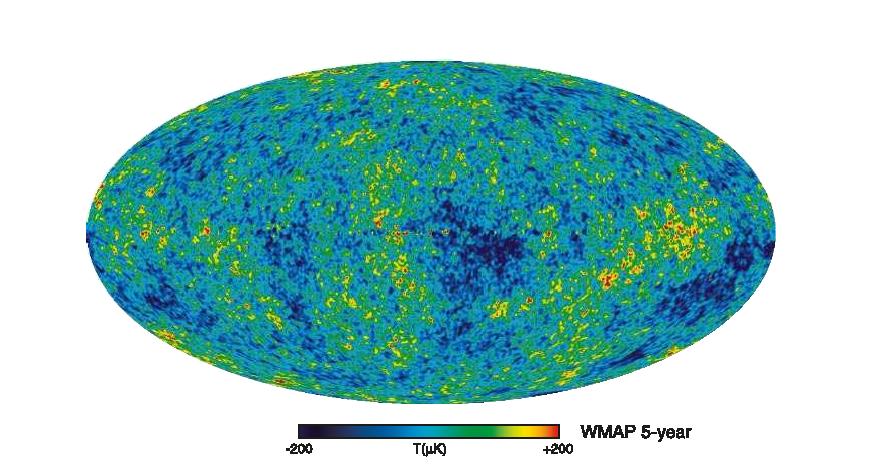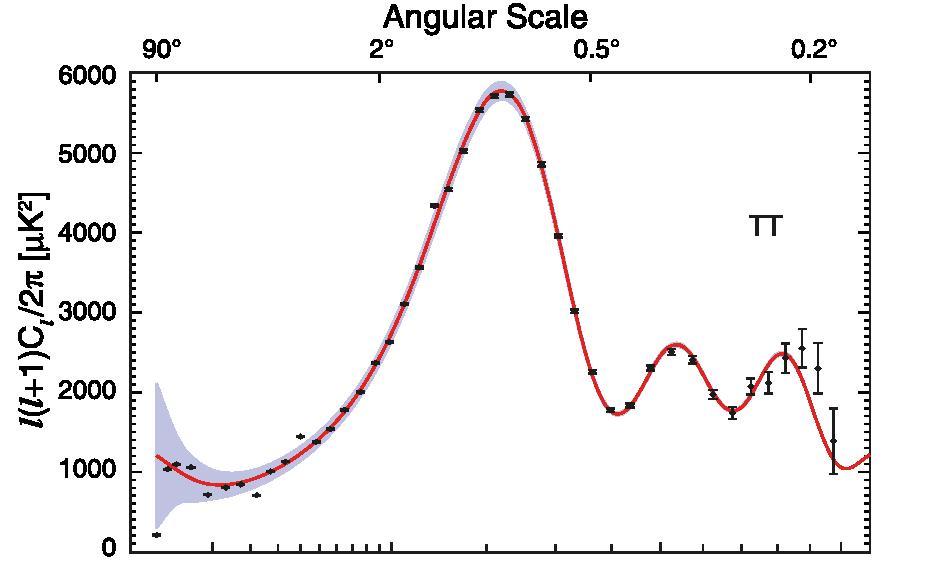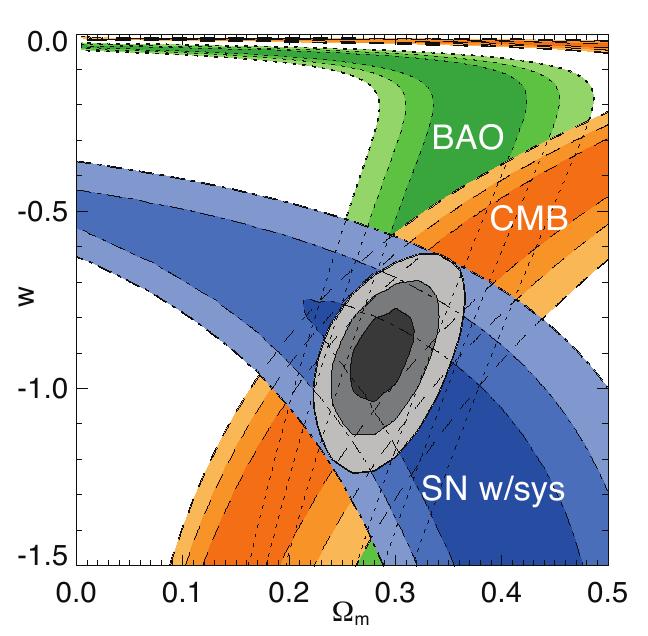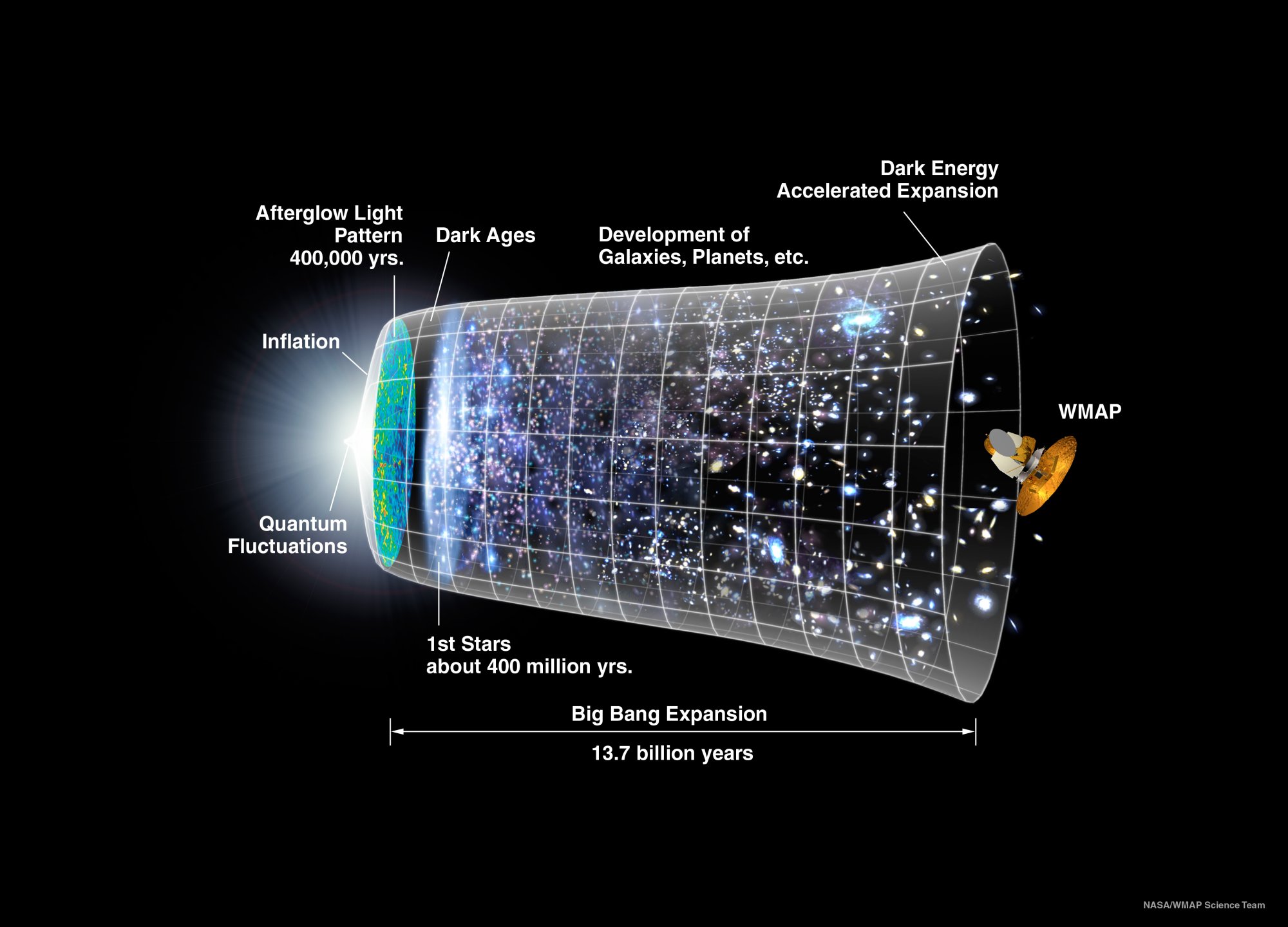Cosmology
Classical cosmology
Cosmology deals with the formation and development of the universe as a whole and became one of the most important branches of astronomy and astrophysics in the last decades. Based on Einstein's theory of general relativity, the basic
assumptions of cosmology are surprisingly simple. One demands only the
isotropy and homogeneity of space, or in other words, no point in space
is preferred to any other. Under these conditions the Einstein
equations simplify to evolution equations for the time-dependent scale
factor, which describes the spatial extent of the universe. One of the most important cosmological discoveries, the accelerated expansion
of the universe by Edwin Hubble, is directly related to this fact.
Based on Einstein's theory of general relativity, the basic
assumptions of cosmology are surprisingly simple. One demands only the
isotropy and homogeneity of space, or in other words, no point in space
is preferred to any other. Under these conditions the Einstein
equations simplify to evolution equations for the time-dependent scale
factor, which describes the spatial extent of the universe. One of the most important cosmological discoveries, the accelerated expansion
of the universe by Edwin Hubble, is directly related to this fact.Another important pillar of classical cosmology is the nucleosynthesis of the first elements like hydrogen, helium or lithium. Those are the building blocks for the construction of other astronomical objects like stars or galaxies.
Perhaps the most important milestone was the discovery of the cosmic microwave background (CMB) by Penzias and Wilson in 1965, which was already predicted in theory. Since then, several high-precision experiments like COBE or WMAP observed and measured this relic from the days when the universe became transparent for photons for the first time. The tiny temperature fluctuations around the famous value of 2.73 K in the CMB reflect the evolution of the first structures in the universe.
Modern cosmology
Today's favoured model, which describes composition and evolution of the universe and in which many cosmologists have big confidence, is the Lambda-CDM model: It is sometimes also called the cosmological standard model and should not be confused with the standard model of particle physics. Its development was preceded by a lot of open questions and unsolved
problems. First of all, many observations like rotation curves in
galaxies, X-Ray emission of galaxy clusters or gravitational
lensing give rise to the assumption that only 20% of the matter in the
universe consist of well-known ordinary matter. The rest consists of an unknown
dark matter which does not radiate and is not understood at all. Furthermore,
observations of distant supernova explosions and the CMB lead to the
fact that roughly 75% of the overall energy content of the universe
are made of something that is even more opaque to us than dark
matter. This mystery is often called dark energy and it gives also an
explanation to the accelerated expansion of the universe. Possible
explanations of this dark energy are threefold. From a static
cosmological constant or dynamical scalar fields over theories of
modified gravity to the abandonment of the homogeneity of the
universe on large scales.
Its development was preceded by a lot of open questions and unsolved
problems. First of all, many observations like rotation curves in
galaxies, X-Ray emission of galaxy clusters or gravitational
lensing give rise to the assumption that only 20% of the matter in the
universe consist of well-known ordinary matter. The rest consists of an unknown
dark matter which does not radiate and is not understood at all. Furthermore,
observations of distant supernova explosions and the CMB lead to the
fact that roughly 75% of the overall energy content of the universe
are made of something that is even more opaque to us than dark
matter. This mystery is often called dark energy and it gives also an
explanation to the accelerated expansion of the universe. Possible
explanations of this dark energy are threefold. From a static
cosmological constant or dynamical scalar fields over theories of
modified gravity to the abandonment of the homogeneity of the
universe on large scales. Extremely short after the Big Bang, there was a period of very fast expansion. A product of this epoch which is called inflation are tiny, statistical fluctuations in the density distribution of the universe, which was assumed to be homogeneous in the beginning. Out of these primordial density fluctuations, the first structures in the universe arise on different scales.

Testing cosmology
The LCDM model delivers a beautiful and promising framework of cosmology. Nevertheless, it has to be tested very carefully against observations. Fortunately, there are many, partly independent, ways to do so. First, there is the CMB with the imprints of the universe shortly after the big bang. Many probes like WMAP or the Planck surveyor can be used to fit cosmological models to the observed power spectrum.Not less important are the observations of the Type Ia Supernovae. Scientists in this community made big advancements in the last years to control systematics, and are now able to obtain reliable distances to these standard candles, which can be used to infer cosmological parameters.
Other methods rely directly on the matter power spectrum like baryon acoustic oscillations (BAO) or number counts of galaxy clusters. Finally, there is also gravitational lensing which perhaps delivers the most powerful test of cosmology, but also has to fight with its systematics. A big step in cosmological observations should be the start of the Euclid satellite, which will mainly focus on BAO's and cosmological lensing.

Literature
If one is interested in further reading, here are some suggestions:- Scott Dodelson, Modern Cosmology, 2003 Academic Press
- Steven Weinberg, Cosmology, 2008 Oxford University Press
- Matthias Bartelmann, lecture notes on cosmology, Heidelberg University
[pdf]
Responsible: Simon Glover, last modification Oct/24/2008 22:54 CEST

 CV
CV